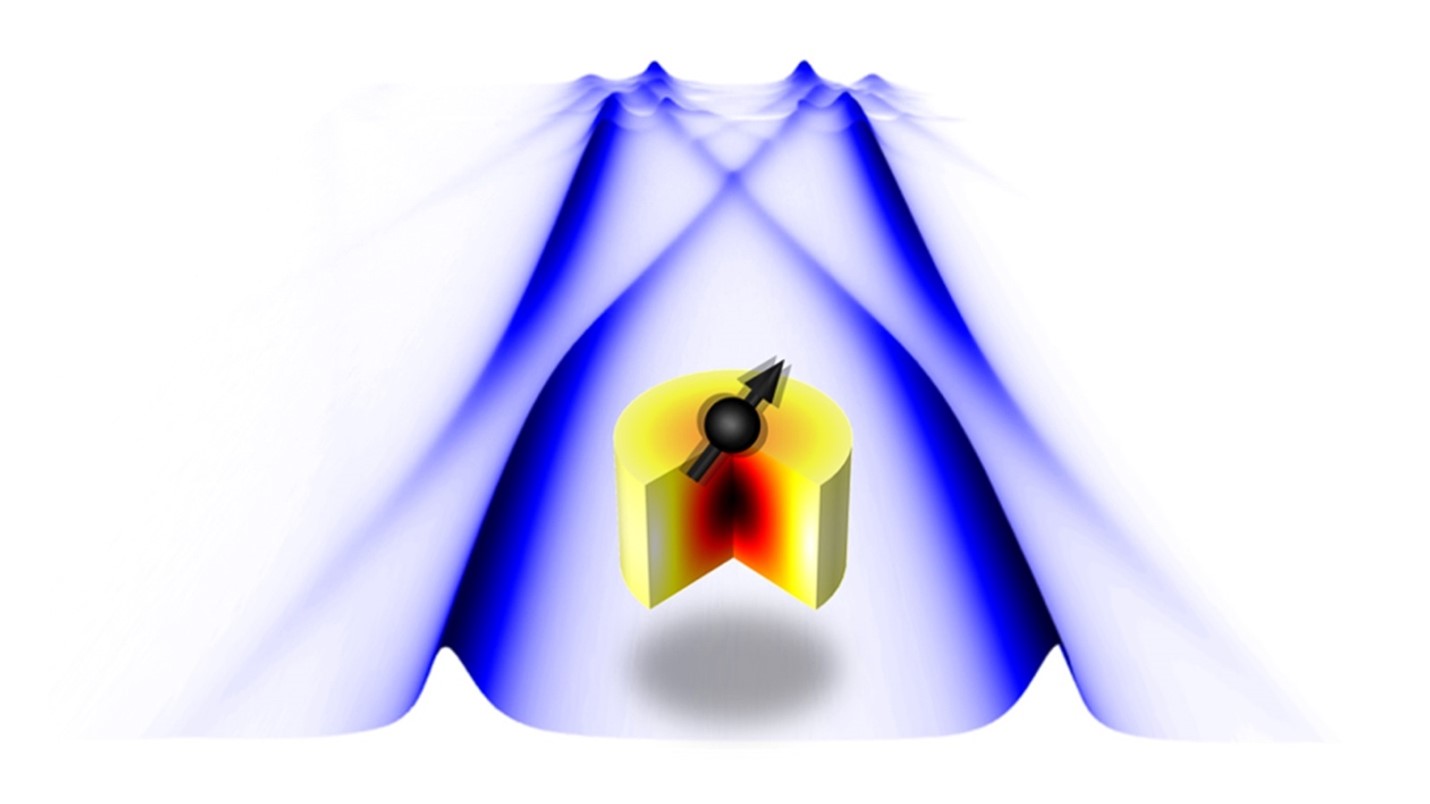Working with theorists in the University of Chicago’s Pritzker School of Molecular Engineering, Argonne researchers have demonstrated a novel approach that allows real-time control of the interactions between microwave photons and magnons [1], potentially leading to advances in electronic devices and quantum signal processing.
Magnons are the elementary particles forming “spin waves” — wave-like disturbances in an ordered array of microscopic aligned spins that can occur in certain magnetic materials. Microwave photon-magnon interaction has emerged in recent years as a promising platform for both classical and quantum information processing. Yet, this interaction had proved impossible to manipulate in real time. The team’s discovery has changed that.
Key achievements were:
- Enabled by novel device design, Floquet engineering was introduced into hybrid magnonic systems for the first time. Floquet engineering refers to the temporal modulation of system parameters and has been used to control the dynamics of a large variety of other systems, such as atoms at ultracold temperatures and quantum dots.
- The frequency of magnons was modulated at previously unachievable speeds, leading to new and controllable modal interactions with microwave photons.
This work provides new opportunities for manipulating magnon-photon dynamics, opening a new direction for magnon-based coherent signal processing in both classical and quantum regimes.
This work was performed in part at Argonne’s Center for Nanoscale Materials.
[1] Jing Xu, Changchun Zhong, Xu Han, Dafei Jin, Liang Jiang and Xufeng Zhang, Floquet Cavity Electromagnonics, Phys. Rev. Lett. 125, 237201 (2020), DOI: https://doi.org/10.1103/PhysRevLett.125.237201.
